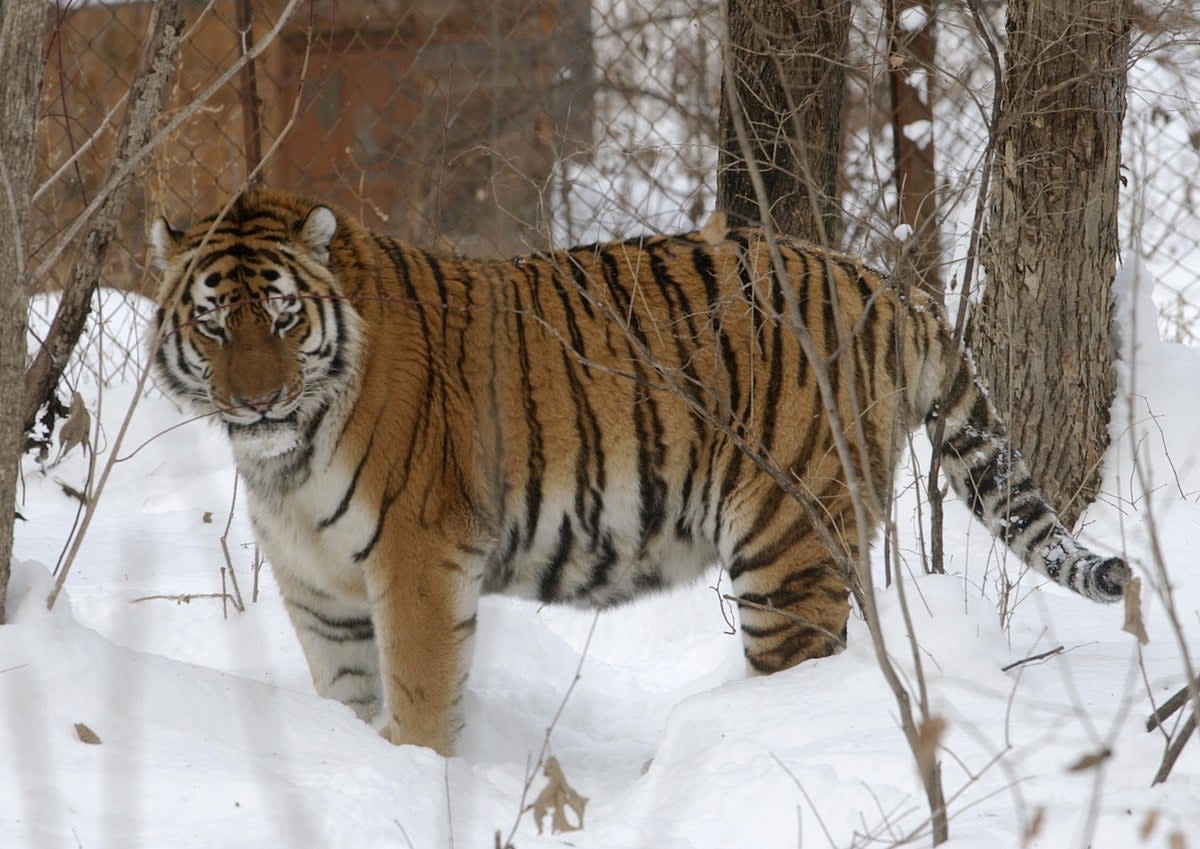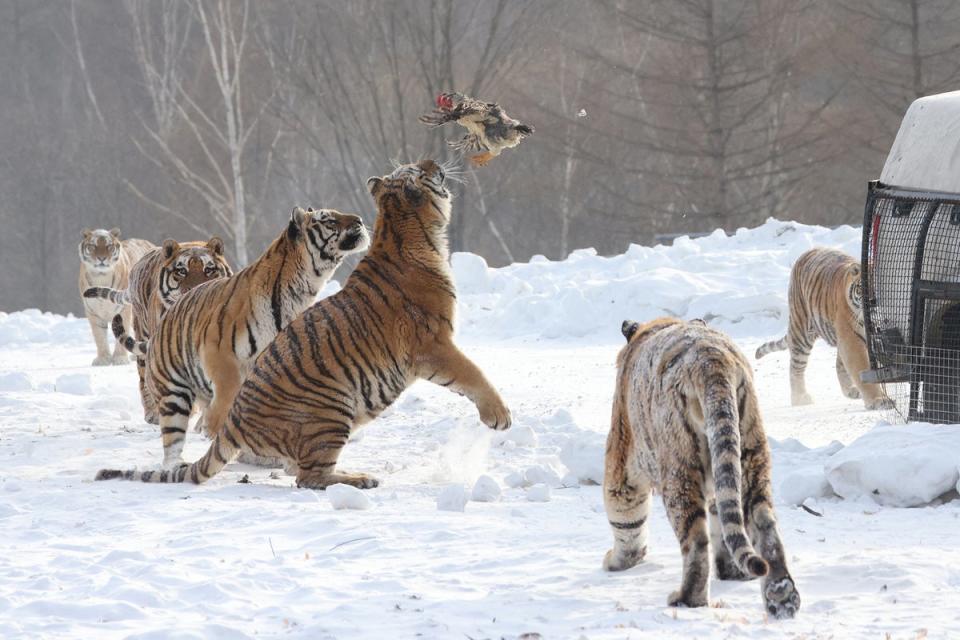Putin wanted to bring back Russia’s huge wild tigers. It’s not going well

The world’s biggest tigers have gone on a rampage in Russia, killing and attacking people in rural villages in the east of the country.
The villagers and their pets are being attacked by Amur tigers, which are seriously endangered and have been the focus of conservation efforts for years by Russian president Vladimir Putin.
In December last year a man and his dog were attacked and killed in the village of Obor, in the eastern region of Khabarovsk, the Moscow Times reported.
According to local police the tiger wandered into the village and killed the man’s dog. The man, who has not been named, followed the tiger into the forest and his body was later found by villagers.
There have been almost 300 cases of tigers entering the area, according to local authorities in the region.
In another incident last year, Sergey Kyalundzyuga was attacked when a tiger smashed through the window of a house.
Mr Kyalundzyuga was on a fishing trip with his cousin, Alexander, when the animal decided to attack.
A source told East2West News: “They heard a noise outside. Sergey went to the window and then a male tiger flew into it, breaking the glass with his head,”

Alexander shot the animal after it caused a number of severe injuries to Mr Kyalundzyuga’s neck, head and arm.
In another incident this weekend a tiger killed a guard dog in the village of Kutuzovka, south of Khabarovsk city, MailOnline reported.
The Russian president has been supporting the rehabilitation of the Amur tigers, also known as Siberian tigers, in the east of the country.
Due to poaching, habitat loss and hunting, the number of majestic beasts roaming the rural east of the country has fallen rapidly since the 19th century.
Putin’s focus on reviving Siberian tigers has meant that the number of adults has risen from around 390 more than a decade ago to 750 in recent years.
At a tiger conservation forum in 2022, he said: “I am happy to highlight the achievements of our colleagues from India, Nepal, Bhutan and China, where the tiger population is steadily growing.”
“We, too, have much to be proud of. No more than 390 adult Amur tigers lived in the Russian Far East taiga 12 years ago.
“Now there are about 750 of them, together with their cubs. This is the result of systematic measures taken by the government, but above all it is the tangible embodiment of hard work and concerted efforts of Russian scientists, enthusiasts and conservation organisations.”
The reasons for the recent spate of attacks are not clear, however it could be linked to destruction of the tiger’s natural habitat, according to conservation experts.


